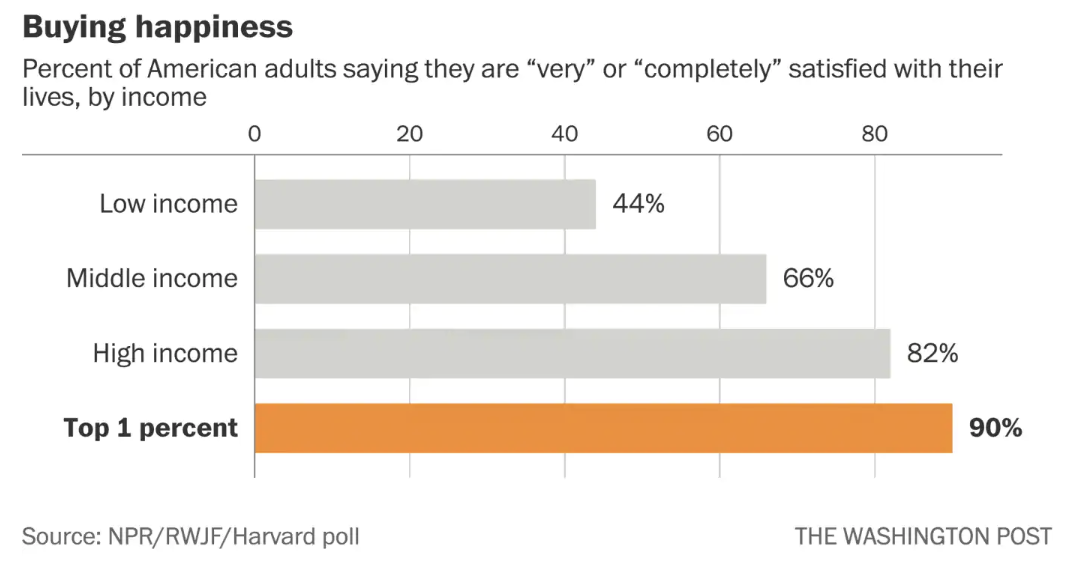
Source: Robert Wood Johnson Foundation via WaPo
The past week, I have been writing about making smarter spending decisions, and also ignoring those who give lazy, bad advice. (See this, this and this).
There is a methodology underlying the three rules I laid out and why people should spend their money more intelligently. The chart above might help to explain why.
Money buys happiness, but only up to a point. A 2010 study by Daniel Kahneman and Angus Deaton found having more money was associated with better emotional well-being, but after a specific point (about $75,000) there is a rapid drop off. Once your basic security needs are met — housing, nutrition, healthcare — the happiness measures to earning more money become smaller (though being wealthy does add to life expectancy).
But happiness isn’t everything: There are other measures of well being, such as life satisfaction. Kahneman notes that “happiness and satisfaction are distinct. Happiness is a momentary experience that arises spontaneously and is fleeting. Meanwhile, satisfaction is a long-term feeling, built over time and based on achieving goals and building the kind of life you admire.”
Here is where things get interesting: Instead of asking people if they are happy and comparing that to their income level, a new survey by the Robert Wood Johnson Foundation asks respondents about their life satisfaction. As it turns out, happiness has a “satiation point” that tails off despite more money. But “life satisfaction continues to rise with income through at least the $500,000-a-year threshold.”
I suspect there are lots of subtle differences between the monied set and everyone else: Control of their time and schedule, a sense of optimism for their children, and an expectation that their assets will give them options in a changing environment, both economically, geopolitically and even climate related.
Money is a tool, one that can buy you control, give you more time and creates options. We should not be surprised that (at least up to a point), more money leads to higher life satisfaction.
Source:
Life Experiences and Income Inequality in the United States
Robert Wood Johnson Foundation, January 9, 2020
https://www.rwjf.org/en/library/research/2019/12/life-experiences-and-income-inequality-in-the-united-states.html
Here are the key findings from RWJF:
- Ninety-three percent of the top 1 percent highest-income adults, 89 percent of middle-income adults, and 87 percent of lower-income adults believe that hard work is the most important factor to achieve economic success in America.
- Only 8 percent of adults with the top 1 percent highest incomes say their families have experienced serious problems paying for medical bills, dental bills, or prescription drugs in the past few years; nearly half of middle-income adults and a majority of lower-income adults say this.
- Twenty-seven percent of the top 1 percent believe it should be a very important priority for government to reduce income differences between people with high incomes and those with lower income, compared to the forty-two percent of lower-income adults who share this view.
- Eighty percent of the top 1 percent highest income adults believe that their children or grandchildren will achieve the American Dream compared to 78 percent of middle-income adults and 70 percent of lower-income adults.

